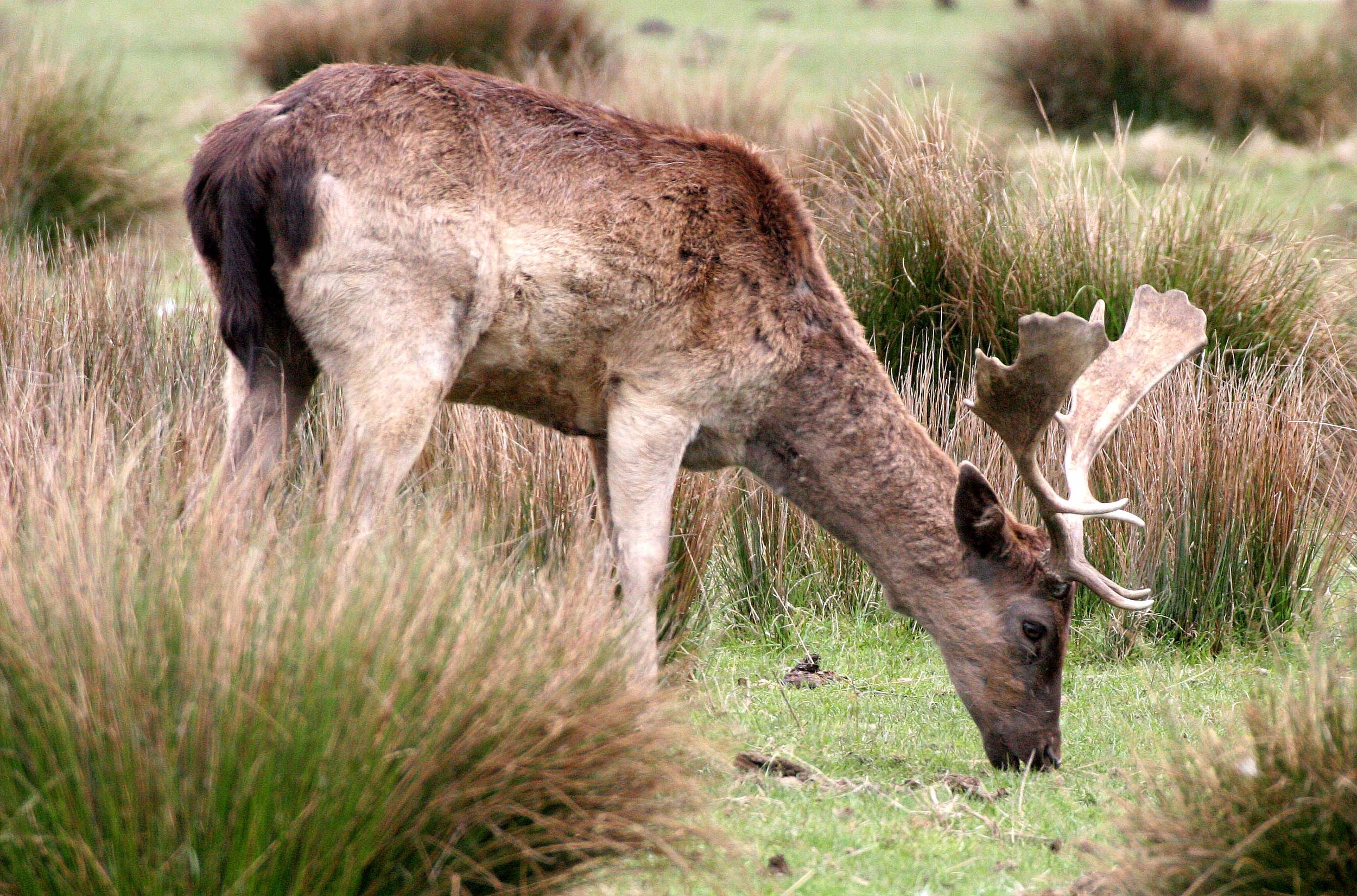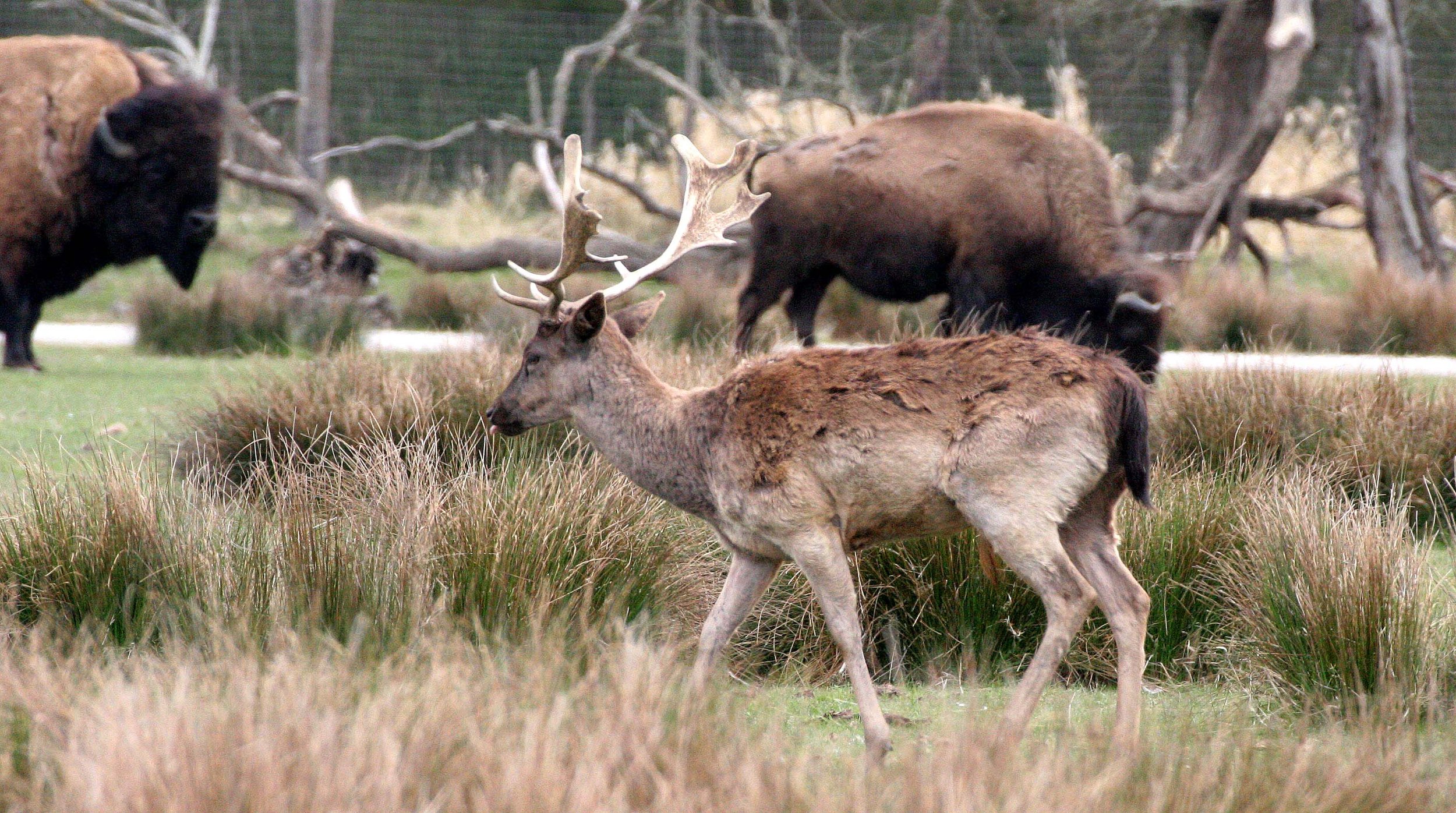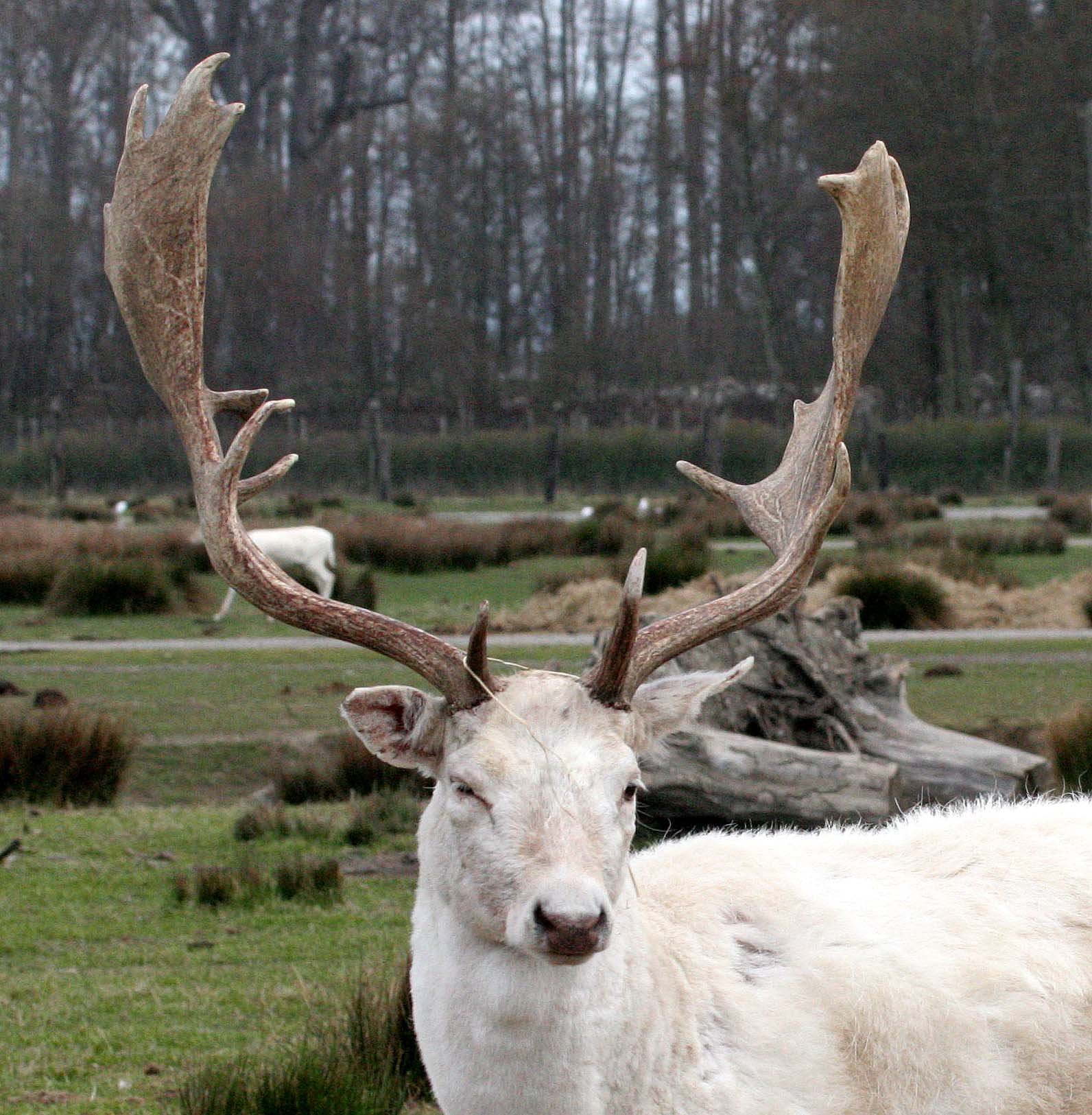
Genus Dama, Fallow Deer
Link to Mammal Galleries
Link to Cervidae Main Page
The European fallow deer (Dama dama), also known as the common fallow deer or simply fallow deer, is a species of ruminant mammal belonging to the family Cervidae. It is historically native to Turkey and possibly the Italian Peninsula, Balkan Peninsula, and the island of Rhodes in Europe. Prehistorically native[2] to and introduced into a larger portion of Europe, it has also been introduced to other regions in the world.
Some taxonomists include the rarer Persian fallow deer as a subspecies (D. d. mesopotamica),[3] with both species being grouped together as the fallow deer, while others treat it as a different species (D. mesopotamica). The white-tailed deer (Odocoileus virginianus) was once classified as Dama virginiana and the mule deer or black-tailed deer (Odocoileus hemionus) as Dama hemionus; they were given a separate genus in the 19th century
1: (Former) native, includes D. mesopotamica
2: Possibly native
3: Early human introductions
4: Modern human introductions
Turkey is the only country known to have definitively natural populations of European fallow deer since the Last Glacial Maximum, but populations there (alongside those of the Persian fallow deer, which also formerly occurred in Turkey) have since become endangered and almost fully extirpated. European fallow deer in Anatolia underwent a major population decline due to the spread of agriculture (leading to the deforestation of lowland forests) and hunting, and populations in the Marmara and Aegean regions went extinct by the turn of 20th century. Other wild populations of Turkish fallow deer survived for longer on islands at Ayvalık Islands Nature Park, Gökova, and Adaköy near Marmaris, but also appear to have died out in recent years. Currently, the only extant wild population of the species known to be undoubtedly natural lives in Düzlerçami Game Reserve in the Mount Güllük-Termessos National Park in southern Turkey, although the area has been largely fenced since, making the population only semi-wild. This population is very few in number and is genetically distinct from other European fallow deer.
On mainland Greece and some Greek islands, such as Corfu, Kythira, and Thasos, that were connected to mainland due to lower sea level or proximity to land, fallow deer were present during the last ice age. A belief arose that the species was almost extinct in Greece, returning during the Neolithic. Contrary to that, remains indicate that reduced numbers survived in several parts of the country like in Thessaly, Peloponnese and Central Greece, increasing and becoming common during mid Neolithic, but mostly east of Pindus mountain range and especially in Macedonia and Thrace. During the Neolithic - Bronze Age periods the species still survives on the islands of Corfu and Thasos, appears on Euboea and starts getting introduced by man to other islands like Crete, some Cyclades, Rhodes, Chios, Lesbos, Samos and Sporades. Remains from early historical periods have been found in eastern Greece and on the islands of Thasos, Chios, Rhodes and Crete. On Samos island a few fallow deer were surviving in 1700, while on Lesbos island the fallow deer became extinct during the late Ottoman period. Wild fallow deer survived on mainland Greece till the 19th century in Evrytania and Boeotia and till the 1910s in Thesprotia, and the last individuals were hunted in Acarnania during the 1930s.
In Bulgaria, the autochthonous population of fallow deer is believed to have declined and disappeared after the 9th or 10th century and the species was reintroduced there recently. In European Turkey, fallow deer were surviving in 19th century. The fact that a male Fallow Deer was captured in Thrace in 1977 and translocated to Düzlerçamı may indicate that a small population existed there at that time. In Albania (possibly in Butrint), the fallow deer seemed to be plentiful during the first half of 19th century.
Possible native populations: Aside from Turkey, other areas of Europe that could have potentially served as refuges for the species during the last ice age include parts of the eastern Mediterranean, including most of the Italian Peninsula, parts of the Balkans, and the Greek island of Rhodes, all of which still host populations of this species. However, palaeontological and archaeozoological evidence of the species' diffusion into these areas during the ice age is very fragmentary, thus whether the present populations in these areas are truly native descendants of relict populations or were introduced by humans is unknown. Presently, the IUCN Red List's range map lists European fallow deer as being native to Italy, Turkey, Rhodes, and most of the Balkans, as having a population of uncertain origin in central Bosnia and Herzegovina, and being introduced to the rest of Europe. In the text, though, all the eastern Mediterranean populations aside from Turkey are listed as having an uncertain origin.
Fallow Deer (Dama dama) - seen in wild conditions in Spain and semi-domesticated in many places from USA to South Africa

















































